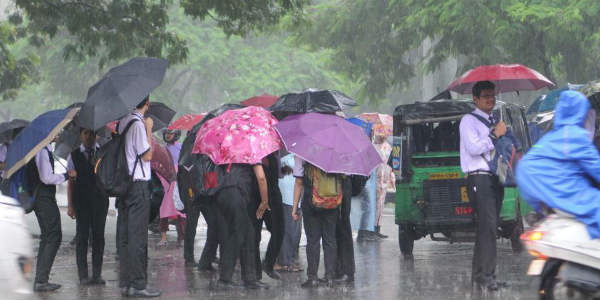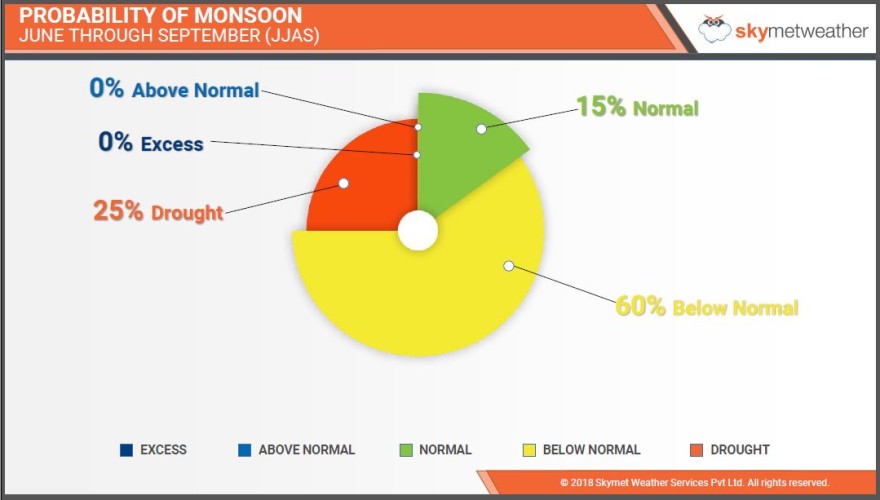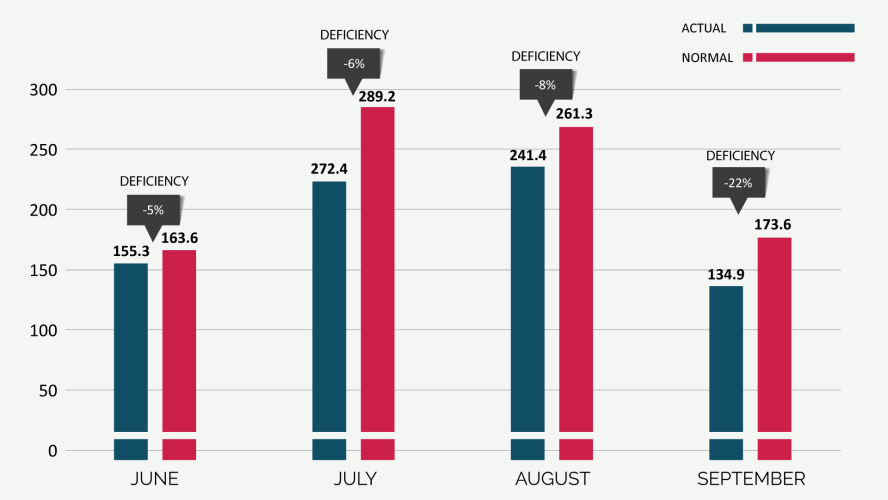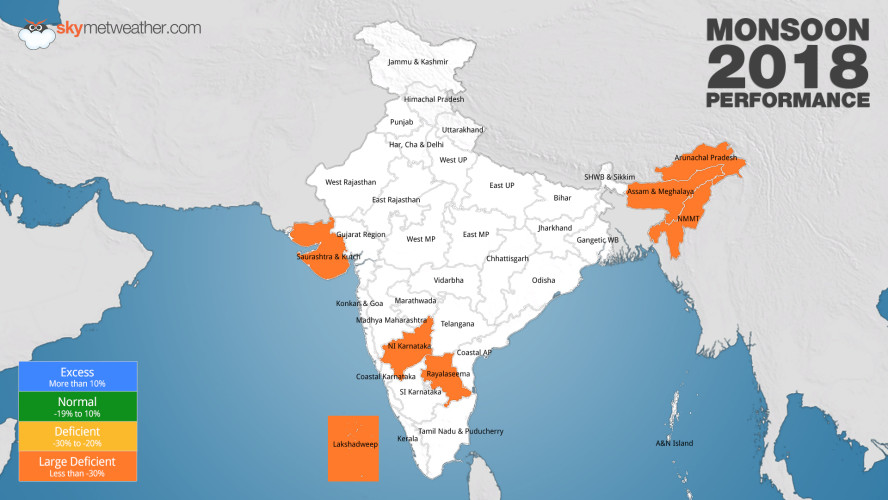
The four-month long Southwest Monsoon 2018 has officially come to an end today, with the country recording below normal rainfall to the tune of 91% of the long period average (LPA). The countrywide cumulative rainfall for the overall season from June 1 till September 30 was recorded at 804 mm against the normal rains of 887.5 mm. Thus, overall the country recorded 84 mm less rains than normal.

Skymet Weather, in its revised forecast, had predicted below average rainfall at 92% (with an error margin of +/-5%) of the LPA, with 25% chance of drought. Going on the same lines, Monsoon 2018 has ended with near drought-like conditions, with countrywide cumulative deficiency at 9.4%.
Drought conditions are declared when the rainfall deficiency is over 10% and more than 20% of area is deficit in plains. In fact, the season had distinction of having deficit rainfall in all four months that too with increasing trend. June ended with deficiency of 5%, that increased in July to 6% and further to 8% in August. However, deficiency increased by manifolds in September that ended with 22%.
Going by the past records, we could have invariably landed up in drought conditions, but then came the savior Cyclone Daye, due to which we were able to avert the drought situation.
Like all other leading weather agencies, Skymet Weather too had predicted normal rainfall at 100% (with an error margin of +/-5%) at the beginning of the season. However, with El Niño expediting its arrival, the entire dynamics got changed.
Month-wise Monsoon performance

Monsoon made a thumping start in June, but its progress soon became sluggish, to be precise, it almost remained stagnant for about good two weeks. As a result, the month ended with deficit rainfall at 95% where 155.3 mm of rains were recorded against the normal of 163.6 mm which is about 8 mm less rainfall.
Thereafter, the track record did not change as both the core Monsoon months, July and August under performed with the latter preceding the former one. July ended at 94% with rains observed at 272.4 mm against the normal of 289.2 mm which is 18 mm less than the normal. August saw 92% of rains with rainfall amounts being 241.4 mm against 261.3 mm, 20 mm less rainfall.
September was the poorest of all that ended with the huge rainfall deficiency of 22% with the rains being at 134.9 mm against 173.6 mm with almost 30 mm less rainfall.
Oceanic Parameters
El Niño: Likely occurrence of El Niño made an early appearance that coincided with the commencement of the Monsoon season itself. Warming up of Ocean impacted the second half of the season more than the first. Sea Surface Temperatures have been on rise since then. 2018 can be touted as an evolving El Niño year and on the expected lines season underperformed.
IOD (Indian Ocean Dipole): Positive IOD is associated with good Monsoon rains. However, it remained neutral almost throughout the season. It was of no help during the season and hardly had any impact on the Monsoon rains.
MJO (Madden-Julian Oscillation): Another parameter that has a positive impact on Monsoon rains, MJO too made a guest appearance only during the onset of season. Thereafter, it became silent.
Region-wise Monsoon Performance
Skymet Weather had predicted pockets of Southern Peninsula will be at risk and accordingly, North Interior Karnataka and Rayalaseema are the poorest performers with high rainfall deficiency to the tune of 29% and 37%, respectively.
The map shown below shows regions which have recorded large deficient rains, which means, rain deficiency being more than 20 percent.

Similarly, Northeast India also under performed. In fact, it was poor more than our expectation. East and Northeast India pocket topped the deficiency chart every month. The region finally ended Monsoon season with the deficiency of 24%.
The map shown below shows regions which have recorded excess rains, which means, rain surplus being more than 10 percent.

However, as per the forecast, Northwest India performed at par. Punjab, after a long gap of five years, ended with 7 percent above normal rains.
Image Credit: wikipedia
Please Note: Any information picked from here must be attributed to skymetweather.com


